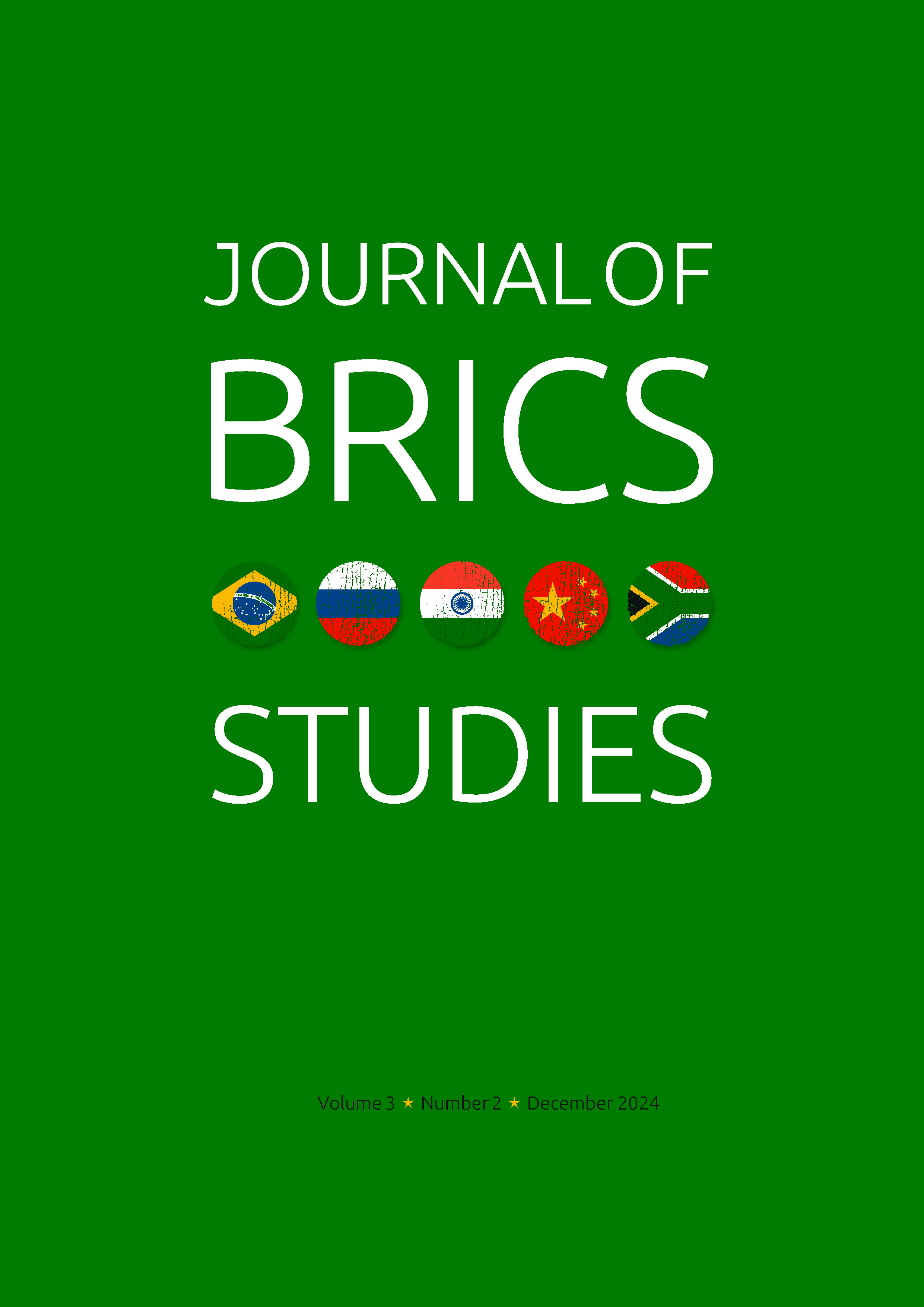BRICS Expansion and Future Prospects Implications and Policy Consideration for Pakistan
Main Article Content
Keywords
BRICS Plus, Pakistan, global governance, economic integration, multipolarity, trade relation
Abstract
The BRICS (Brazil, Russia, India, China, South Africa) bloc, representing a coalition of major developing nations, has recently expanded by admitting six new members—Argentina, Egypt, Ethiopia, Iran, Saudi Arabia, and the UAE—effective from January 1, 2024. This expansion transforms the bloc into BRICS Plus (+), reflecting the rising multipolarity in global politics and economics. This paper examines the implications of BRICS Plus for Pakistan, assessing potential economic, geopolitical, and security benefits while addressing challenges such as Indian opposition and Western pressure. The study concludes with policy recommendations for Pakistan to leverage this opportunity by enhancing trade, investment, and diplomatic relations within BRICS.
Article Metrics Graph
References
Brawley, M. (2007). Theoretical embedding of BRICS foundation: Comparative analysis of emerging economies using Power Transition Theory. International Politics Review, 4(2), 102-115. DOI: 10.1080/10508307003423
Cai, S., Zhang, Y., & Meng, B. (2015). Spillover effects of TTIP on BRICS economies: A dynamic GVC-based CGE model(No. 485). Institute of Developing Economies, Japan External Trade Organization (JETRO).
Evaghorou, E. L. (2016). BRICS states new development bank: challenges and controversies for the global political economy system. International Journal of Diplomacy and Economy, 59-74. https://doi.org/10.1504/IJDIPE.2016.079169
Ghalib, S. J. (2023, August 30). BRICS Expansion and options for Pakistan. Margalla Policy Paper. Retrieved from https://stratheia.com/brics-expansion-and-options-for-pakistan/
Glosny, M. (2010). Possibility of BRICS cooperation in a unipolar world. Comparative Politics, 43(3), 423-444. DOI: 10.5129/comp.pol.201043
Hansen, F., & Sergunin, A. (2015). Russia, BRICS, and peaceful coexistence: Between idealism and instrumentalism. In C. De Coning, T. Mandrup, & L. Odgaard (Eds.), The BRICS and coexistence: An alternative vision of world order (pp. 75–99). Routledge Taylor & Francis Group. DOI: 10.4324/9781315612861
Hassan Isilow. (n.d.) “More than 20 countries have applied to join BRICS: South African president”, AnadoluAjansi (AA), updated on August 21, 2023.
IMF. (2023). BRICS Plus Population. Retrieved from https://www.imf.org/external/datamapper/LP@WEO/ARG/BRA/CHN/ETH/IND/IRN/RUS/ZAF/ARE/SAU/EGY?
Jim O’Neill. (2001). Building Better Global Economic BRICs. Goldman Sachs, Global Economics Paper No. 66. DOI: 10.2139/ssrn.260662
Joint Statement of the BRIC Countries’ Leaders”, BRICS Information Centre, University of Toronto, published on June 16, 2009.
Khan, M. T. (2023, October 12). BRICS AND PAKISTAN - ASSESSING OPPORTUNITIES & CHALLENGES. Issue Brief, pp. 1-11.
Krugman, P. (1991). The creation of economic blocs and global welfare maximization. Journal of International Economics, 21(2), 199-218. DOI: 10.1016/0022-1996(91)90012-Q
Lagutina, M., & Vasilieva, N. (2012). Global Eurasian region: Theorizing socio-political integration. Petersburg Technical University Press, 11(3), 194–206. DOI: 10.1080/10670564.2012.700723
Lim, D. (2014). Assessing China’s satisfaction with the status quo: Application of Power Transition Theory. Journal of Contemporary Politics, 22(1), 33–51. DOI: 10.1080/09557571.2014.873264
Mandrup, T., & Smith, K. (2015). South Africa’s diplomacy of Ubuntu in BRICS: An African approach to coexistence. In The BRICS and Coexistence: An Alternative Vision of World Order (pp. 149-170). Routledge Taylor & Francis Group. DOI: 10.4324/9781315612861
Mathur, S., & Dasgupta, A. (2013). Technological gaps and cooperation potential among BRICS economies. Journal of Emerging Markets, 7(4), 86-98. DOI: 10.2139/ssrn.2399747
Nasrullah. (2021) Economic implications of BRICS for Pakistan: a CGE approach; International Transaction Journal of Engineering, Management, & Applied Sciences & Technologies; 1-11.
New Development Bank. (2023, 11 5). Retrieved from https://www.ndb.int/about-ndb/: https://www.ndb.int/about-ndb/.
O’Neil, J. (n.d.). “Building Better Global Economic BRICs”. Goldman Sachs, Global Economics, Paper No: 66, published on 30th November, 2001.
Onuitalia (2023, August 24) https://www.onuitalia.com/2023/08/24/brics-joint-statement-calls-for-unsc-reform-with-greater-role-for-india-brazil-south-africa/
Organski, A. F. K. (1958). World politics and the power transition theory. Alfred A. Knopf. DOI: 10.1016/0030-4387(58)90112-7
Reuters, Johannesburg, Aug 24 retrieved from https://www.reuters.com/world/brics-poised-invite-new-members-join-bloc-sources-2023-08-24/
Saddam (2023). BRICS and its prospects for the future future; Pakistan House, A Think Tank of International Affairs. August 26, 2023; http://pakistanhouse.net/brics-and-its-prospects-for-thefutue
Statista 2023, Retieved from https://www.statista.com/statistics/1412425/gdp-ppp-share-world-gdp-g7-brics/


